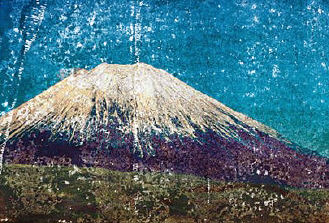|
| ||||||||||||||||||||||||||||
|
||||||||||||||||||||||||||||
|
|
||||||||||||||||||||||||||||
more about musesThe muses personified the arts. They were held to be the true source of art. Like nature and creation, the muses and their arts seemed magical and unearthly. Nature and the arts were both wonderful, creative, awful (awe-full) agents for change that were beyond human control or understanding. No wonder the ancients held the muses to be sacred. To explore further, click below. the Greeks had nine muses
Where they lived
The Muses were thought to live on the mile-high Greek mountain in central Greece called Helicon. Helicon was also thought to be the home of Apollo, the Greek god of the Sun, a view which in their minds connected the muses with Apollo.*
Apollo was (and is) the god of light, healing, music, poetry, prophecy, and manly beauty. He was the son of Leto and brother of Artemis, and a very handsome young man, indeed; a proper companion for a muse.
*NOTE: As pictured, Muse Mountain is actually Mt. Ruapehu volcano in Tongariro National Park, New Zealand. On Helicon's eastern slope, the Greeks planted a grove and erected a temple sacred to The Muses and another to Apollo. Helicon was some place back then. Today, it's just a peak or mountain range in Boeotia, in central Greece. their Heritage
The muses are descended from a royal house. Zeus was their father and
Mnemosyne, the ancient Greek goddess of memory, was their mother.
Zeus was the supreme deity of the ancient Greeks. Menmosyne was no slouch, either; she was the daughter of Uranus and Gaea and the ancient Greek goddess of memory. So, to be a daughter of Zeus and Mnemosyne was quite an honor; and, since the muses personified the arts, it demonstrates the high regard in which the arts were held. Our word for assisting or intended to assist the memorymnemonicis derived from the ancient Greek word for mnemonic, which is eponymous with Mnemosyne's name; and further, her name is related to two other words pertaining to memory: ancient Greek for to remember and for mindful. What memory, remember, or mindful have to do with the muses, if anything, we are not sure. Perhaps it is the Greek way of announcing to the world that the muses and their arts are not to be overlooked. their arts
To the ancients, each new work of art was something different
from what had gone before it, something novel, an inspiration. Art was
creation, and creation was the work of gods, not men. Who could
understand the source of such creation? You might as well try to
understand the gods or their lightning. A work of art was a force of
nature like the winds, tides, planets, and stars,
beyond mere mortal understanding.
What could explain creation? Only magic. If the artsmusic, poetry, sculpture, history, astronomy, and dancewere created the way nature was, magic must be their ultimate source, too; and the muses, who personified the arts, must also be magical. The magic must be divine inspiration; it must be in and from the muses, from on high. But if art was magical, it could not be artists who created artthey were mortals. The artists must be drawing on this magic when they devise their new and wonderful artful creations. The magic of the muses was the origin of their artistic urges, the thing that produced the art. And the products that resulted from their creative endeavorsthe artswere themselves beyond complete understanding; they too were magical. | ||||||||||||||||||||||||||||
|
| ||||||||||||||||||||||||||||
Search this web site with Electricka's Search Tool:
tap or click here
Electricka's Theme Products
Shop At Cafe Press
This web site and
its contents are copyrighted by
Decision Consulting Incorporated (DCI).
All rights reserved. | ||||||||||||||||||||||||||||




